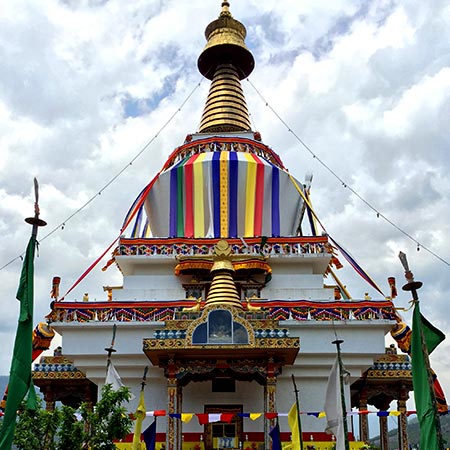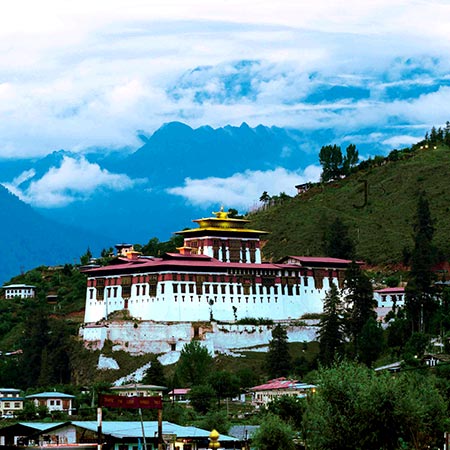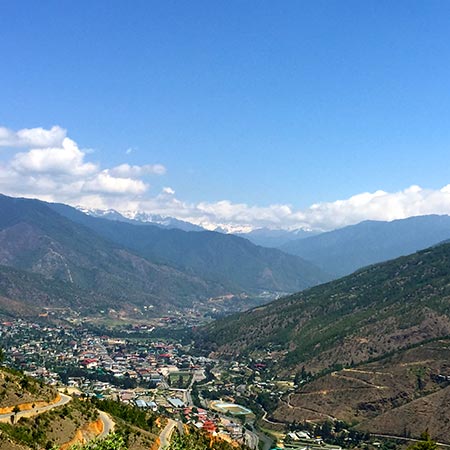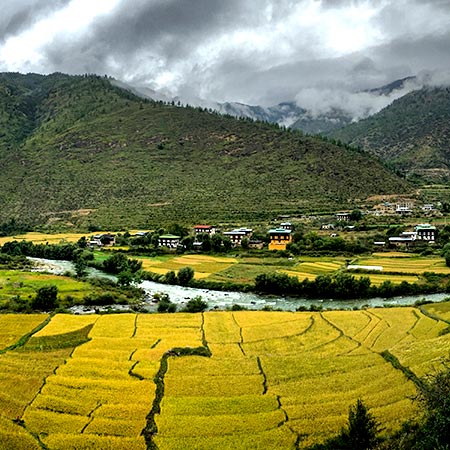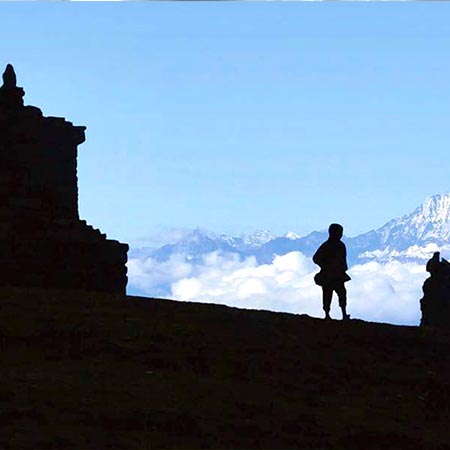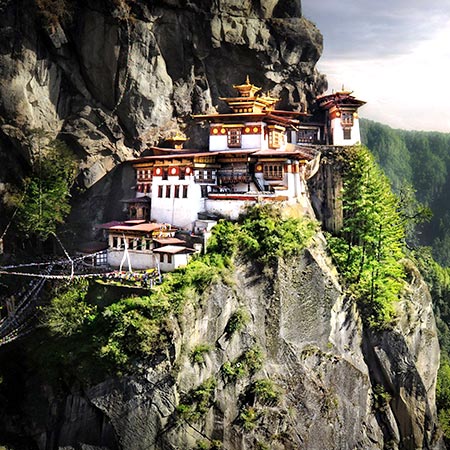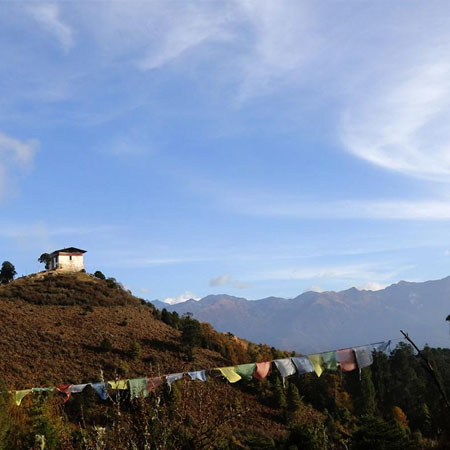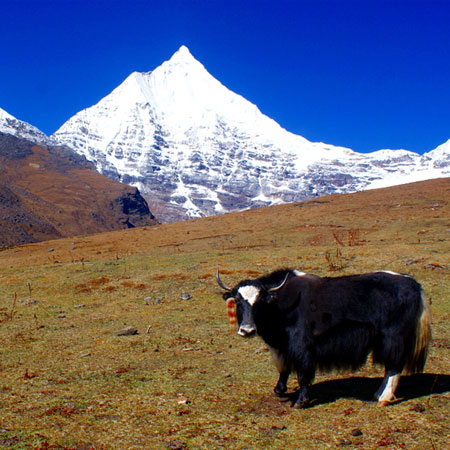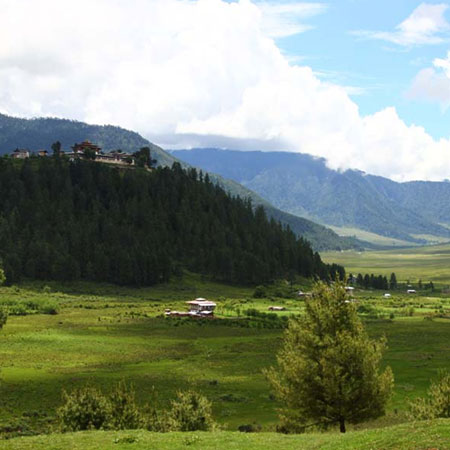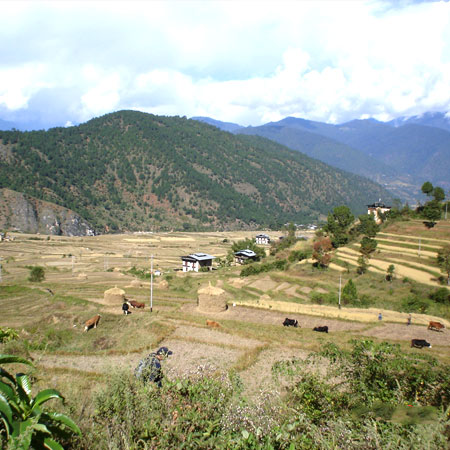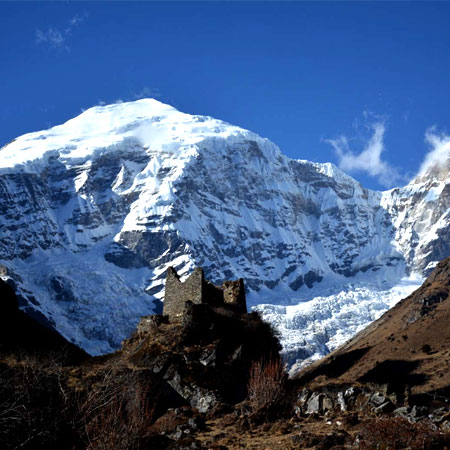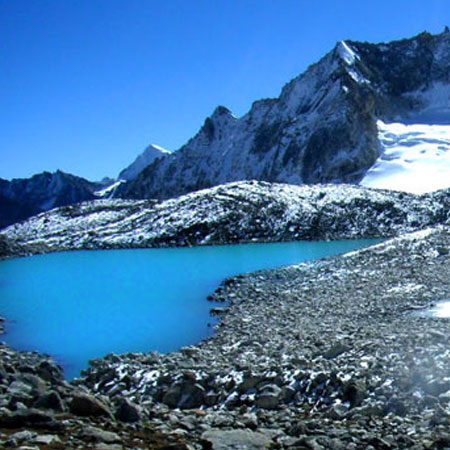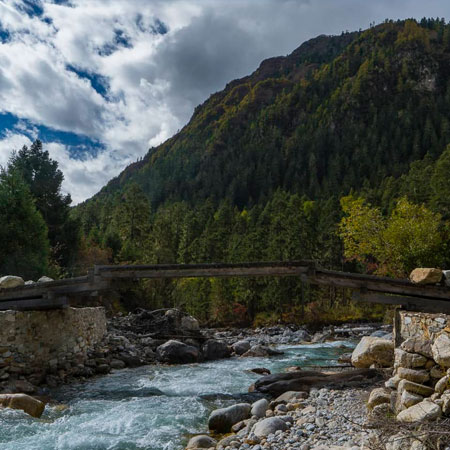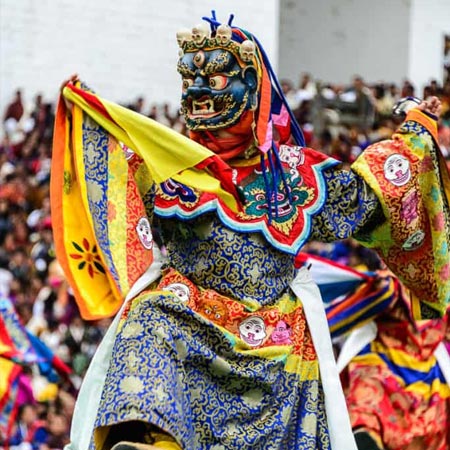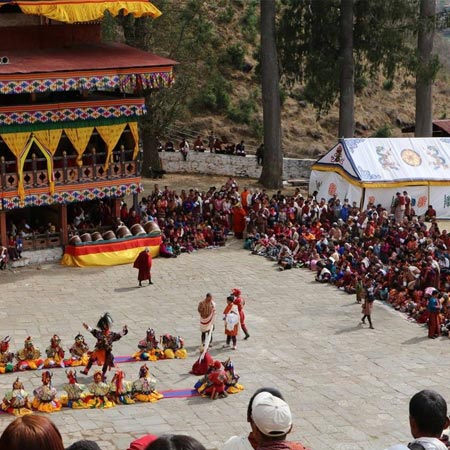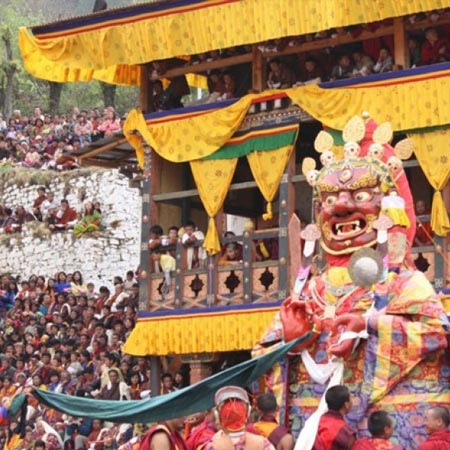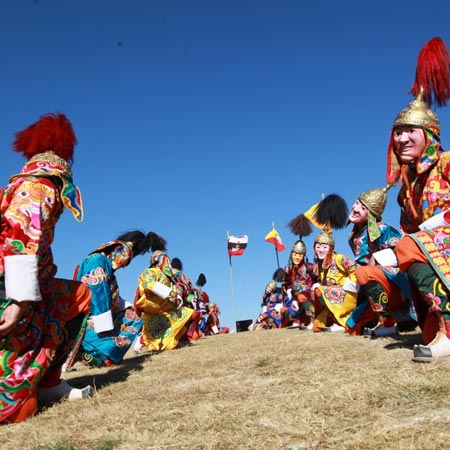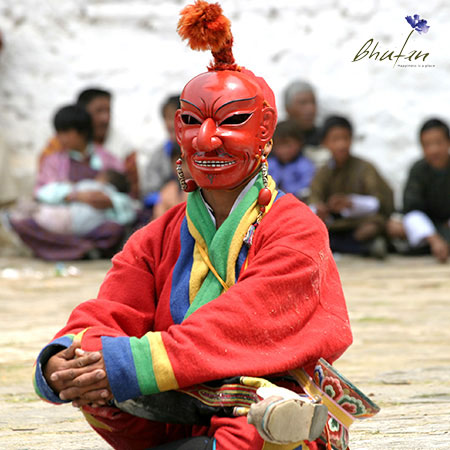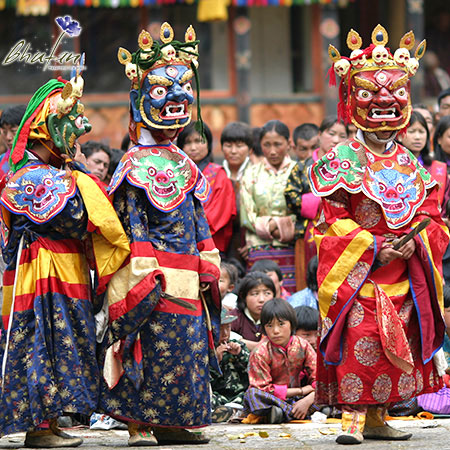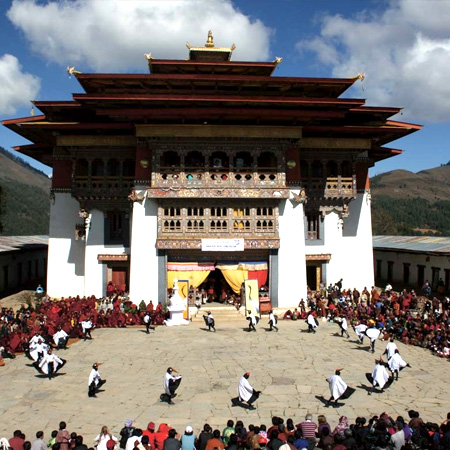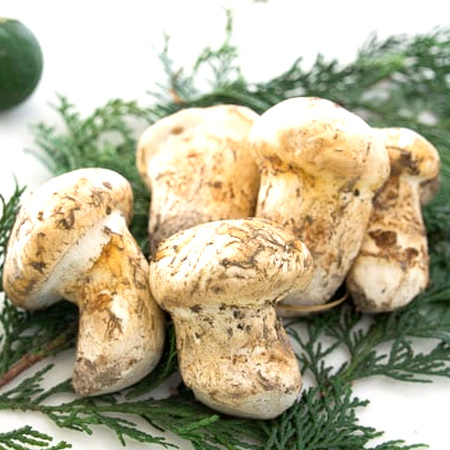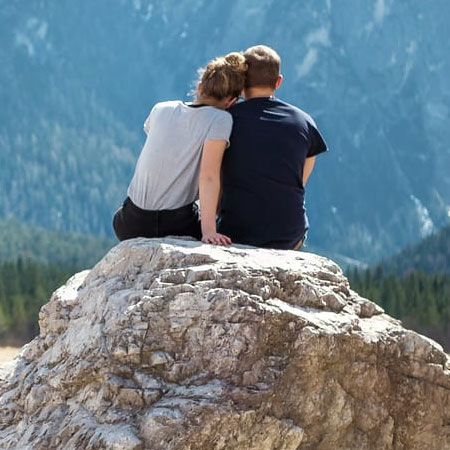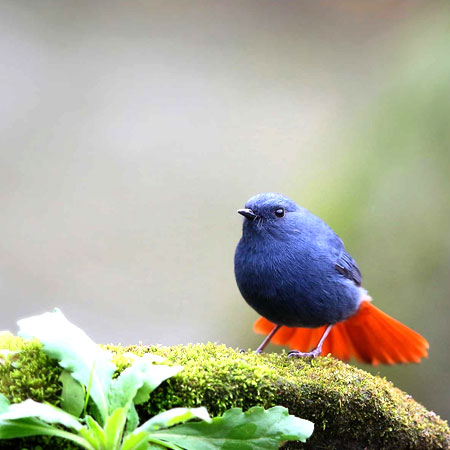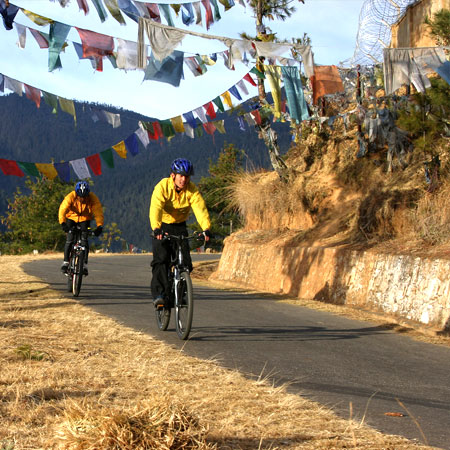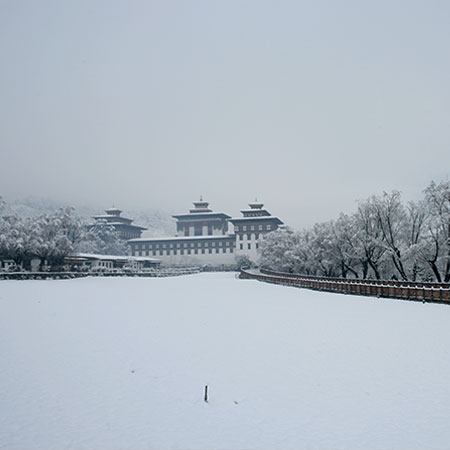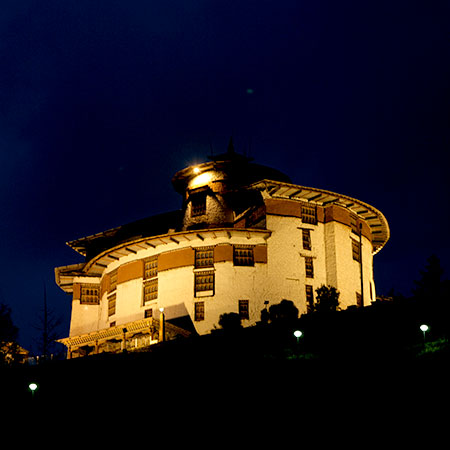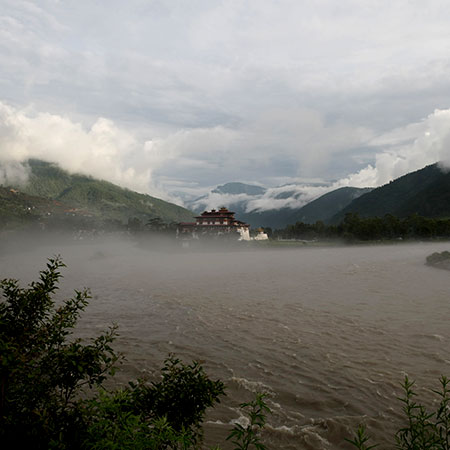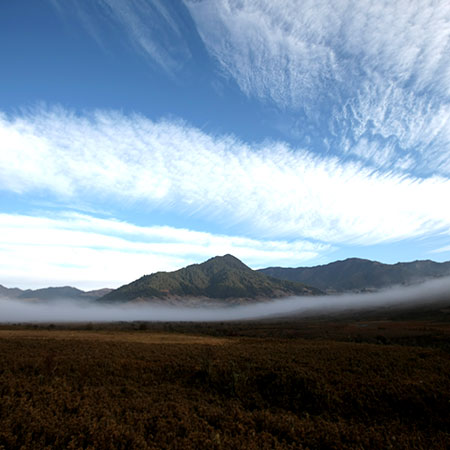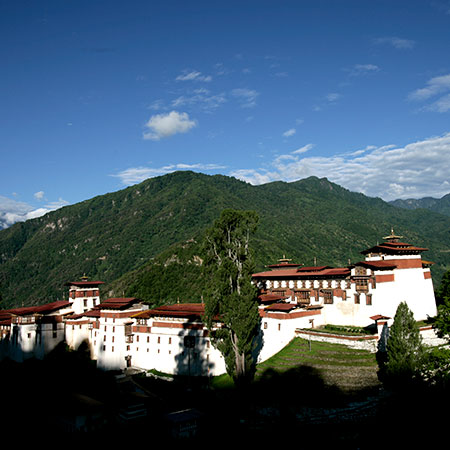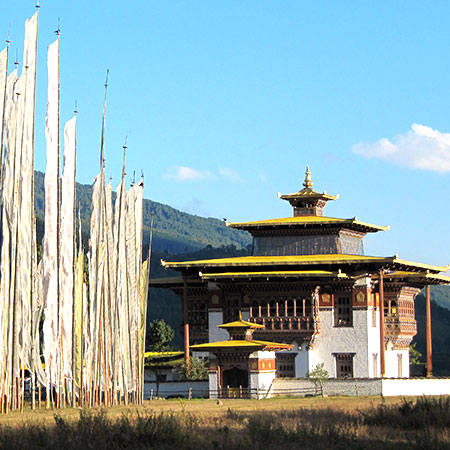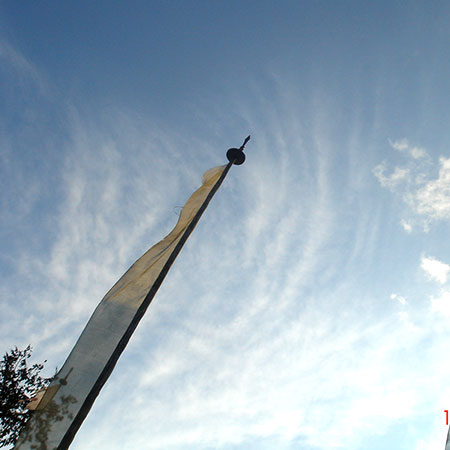Bhutan Bumthang Cultural Trek
Tour Duration : 13Days 12Nights
Trekking in Bhutan
Trekking in Bhutan is unlike anywhere else in the Himalayas. The kingdom is home to some of the most challenging high-altitude treks in the world. Perched on the eastern edge of the Himalayas — make excellent terrain for trekking enthusiasts. There is no shortage of treks in Bhutan, ranging from the relatively easy and scenic Druk Path, to one of the world’s hardest treks, the Snowman Trek.
So whether you’re going on a short hike in the lowlands or challenging yourself to an epic high-altitude trek, you need to prepare yourself for the raw wilderness and harsh conditions that any traveller to Bhutan faces.

Detailed Itinerary
Trek Introduction
This trek is very gentle and easy, but lets you enjoy high passes and snow-covered mountains. It goes through the village of Ngang Lhankhang to the Ugyen Chholing Palace, the home of the descendents of Bhutan’s royal families. The trek features forest, bamboo marsh, fields and the Phe-Phe la mountain pass at 3200m.
Day 01 : Arrive at Paro. 2250M.
Flight from Bangkok to the Kingdom of Bhutan. On the flight, you can see breathtaking views of the Great Himalayas. Upon arrival at Paro International Airport, you will be welcomed to the Kingdom by your guide from the Travel Agent. After lunch: visit to Ta- Dzong (built in the 17th century to help protect Paro Dzong). In 1968 it was turned into the National Museum of Bhutan. It has a fascinating collection of Household, Military, Royal & Religious items including beautiful Thangka Paintings.
Day 02 : Paro Sightseeing
Early morning start from the hotel and drive to the ruins of Drukgyel Dzong to see the view of Mt. Chomolhari (7315m). Drive back to Sartsam Chorten and walk up to the Taktsang monastery (Tiger nest) viewpoint. It is believed that Guru Rimpoche, who brought Tantric Buddhism to Bhutan in the 8th century, meditated here. The monastery was built later in the 17th century on the same site. In April 1998, a fire destroyed the main structure of the buildings and the religious contents. A complete restoration was done and was built exactly the same as the original one. This place beholds the history of the hidden land. The walking time is approximately five hours. But depend on one’s pace. When we return to main road we turn to the right and drive further to Drukgyel Dzong. It was built in1649 by Shabdung Ngawang Namgyel. The Dzong was destroyed by fire in 1951 & the ruined remains are now preserved as a historical site. On the way back we will visit one of the oldest monasteries that we have in Bhutan. The first King of Tibet Songtsen Gambo built Kyichu Lhakhang in the 7th century to introduce Buddhism into our country.
Day 03 : Paro – Thimphu. 65 KM. 2 Hours. Altitude: 2350 M.
Drive to Thimphu the modern capital of Bhutan. The drive will take around 2 hours. Check in the hotel. After lunch, visit the Memorial stupa of the Late King, built in 1974, the Indigenous Hospital, where traditional medicine is still practiced, and the Painting School, where children still learn the ancient art of painting. Overnight Thimphu.
Day 04 : Thimphu Sightseeing.
Visit to a viewpoint overlooking Thimphu, National animal of Bhutan (Takin), Dupthop Nunnery, National Library, Traditional Paper factory, Changangkha monastery, Folk heritage museum and Textile museum etc. Overnight Thimphu.
Day 05 : Thimphu – Punakha – Trongsa. 205KM. 8 Hours. Altitude: 220 M.
After an early breakfast we will drive to Punakha District. It is 77 Kilometers. The drive will take 3 hours from the capital Thimphu and Punakha lies at the altitude of 1350 m above sea level. It is a sub- Tropical area. On the way we will cross the Dochula pass 3150 m, on a clear day we will see the whole range of the eastern Himalayas from here. We drive downhill until we reach Punakha. The temporal ruler of Bhutan Shabdrung Ngawang Namgyel built Punakha Dzong in 1637 at the confluence of two rivers called the PO-Chu and MO-CHU. (Male & Female) After lunch, we drive to Trongsa. It is 128 kilometers and 5 hours drive from Punakha. Wangdue is another District and is only a half hours drive from Punakha. Wandgdue Dzong was Also built by Shabdrung Ngawang Namgyel but one year later than Punakha in1638. The road will climb all the way to Pele- la pass 3300m. It is a landmark between East & west and from here we will drive all the way down to Trongsa. Other way we will come across Yak herder’s camps and encounter Yaks especially during winter. We will also see the high Himalayan villages like Rukubji and Chendebji. Overnight Trongsa.
Day 06 : Trongsa – Bumthang. 68 KM. 3 Hours. Altitude: 2600 -+ M.
In the morning after breakfast we will take an excursion to Kuenga Rabten. It was the winter Palace for our beloved 2nd King Jigme Wangchuk. It is 23 kilometers from Trongsa and it takes about 2 hours by car. Although most is empty and only one room is occupied for the library the palace is under Special Commission of cultural Affairs. We do not need any permit to get inside. This trip from Trongsa to Kuenga Rabten will give you an intimate insight into the early days of Bhutan’s Monarchy. Besides the palace you will also see the beautiful expanse of rice terraces in the lower Mangdu-Chu valley and large waterfall. Drive back to Trongsa for lunch. Visit Trongsa Dzong. It was built at different periods on a spur over looking the Mangdu-Chu River and it is one of the longest & most impressive Dzongs in Bhutan. How did Trongsa get its name? Well many centuries ago the horse of Palden Lhamo (Bhutan’s guardian deity) appeared before Lam Naggi Wangchuk who has settled in this village of yueli, a few kilometers above today’s fortress of Trongsa. For Naggi Wangchuk, the presence of Lhamo-Pal den’s horse was an auspicious event. In order to immortalize the miraculous event, he built a small meditation hut- Tshamkhang and started to meditation there, gradually more and more meditating huts arose near by & the place looked more like a village. People of yueli called it Dzongsar (New Village) and because they pronounced it as Trong –Sar the name stuck. In evening drive Bumthang. We climb all the way to Yotong la pass 3400m.It will be the highest pass on your trip to Bhutan. After the pass we drive down to the Chhumey valley before we reach Jakar. This valley is famous for yathra weaving in central Bhutan. Overnight Bumthang.
Day 07 : Bumthang.
Bumthang is different from all the other valleys in Bhutan. It is very spacious and open ranging in altitude from 2600m to 4000m. Bumthang is a heaven for hikers and Trekkers, not to mention the numerous beautiful and important Buddhist monasteries and pilgrimage sin different locations.
Take a walk up to Tamshing monastery, founded by the Terton Pema Lingpa, where about 200 monks reside. Visits to Wangdi Chholing Palace, Jambay Lhakhang and Kurjey Lhakhang one of the oldest monastery in the Kingdom. All the Kings of Bhutan are taken for their cremation rites to Kurjee Monastery. Visit some more temples. its, making it the Cultural and Historic heartland of Bhutan. One could spend months exploring this fascinating valley. Almost every little valley or hill has a background of interesting myths and legends about Kings, Buddhist masters and Serpents. Bumthang is especially dominated by the religious influence of Guru Rinpoche (Padmasambhava) who is believed to be the second Buddha 7th –8th A.D. His reincarnation the Treasure revealer or Terton Pema Lingpa (1450-1521) who is known to have discovered many sacred Buddhist texts & treasures hidden by Padmasambhava (Guru Rimpoche)
Day 08 : Jakar – Nagang lhakhang. Walking time around 6 hours.
The trek route follows the Chamkhar Chu River, coming across many villages and temples. This is a very easy and relaxing day. Arrive at the Nagang Lhakhang Village. ‘meaning’ (The Land of swans) Overnight Camp. Altitude: 2900 m.
Day 09 : Ngang Lhakhang – Ugyenchholing. Walking time 7-8 hours.
The trail ascends gradually going through the forest of junipers, until you arrive at the Phe -Phe – La pass at an altitude 3340 meters. After the pass descend to the Tang valley, finally arriving at Ugyen Chholing village. Overnight Camp. Altitude: 2850 m.
Day 10 : Drive to Bumthang.
Morning walk up to the Ugyenchholing Dzong. Visit the Dzong and the surrounding village and then drive to Jakar following the Tang Chu River until you arrive at the main road junction and on the way visit Tang Mebartsho (Burning lake), where the Terton Pema Lingpa, the reincarnation of Padmasambhava, is supposed to have discovered religious treasure in the 12th century. This lake is very sacred and is visited by many Bhutanese during auspicious days to offer butter lamps.
Mebartsho, (Meaning Burning Lake). The important of the site is indicated by the extensive array of prayer flags and is considered as one of the most holy places for Buddhist pilgrimage. Evening have free time in town. Overnight Bumthang.
Day 11 : Bumthang – Gangtey – Wangdue. 8Hours.
Gangtey Goemba was built in small hillock surrounded by blue pine trees and was founded by the descendant of Pema Lingpa. The great Bhutanese saint from Bumthang in 16th century. At the end of 17th century it was enlarged and at present it is headed by the 9th reincarnation called Gantey Trulku. At present it is under renovation and it is ringed with the family homes of Gomchens (Laymen) who work and worship at monastery.
Further on you will reach to Phobjikha valley. This place is reserved for the migration of the Black Necked Crane. The people out here have become friendly with the endangered species and every consecutive year starting from 2nd week of November to 1st week of April, the fields and marshes of this undisturbed valley occupied with these wonderful birds. After having a picnic lunch here and then drive to wangdue. Overnight Wangdue.
Day 12 : Wangdue – Paro. 5Hours.
After breakfast, visit wangdue Dzong. It was built 1638. It is believed to be built on the back of the giant Elephants back and is considered one of the most important Dzongs of the 17th century as it controlled west – East and to the South. Make a hike to the Divine Mad Man Monastery. The Buddhist community considers it the land of fertility. If a couple is trying for a baby they have to come here to pray for it to be possible. A lot people come here to get the name for their child, as it is believed to bless. Overnight Paro.
Day 13 : Departure.
Early morning drive to Paro Airport. Where our guide will bid you a farewell
